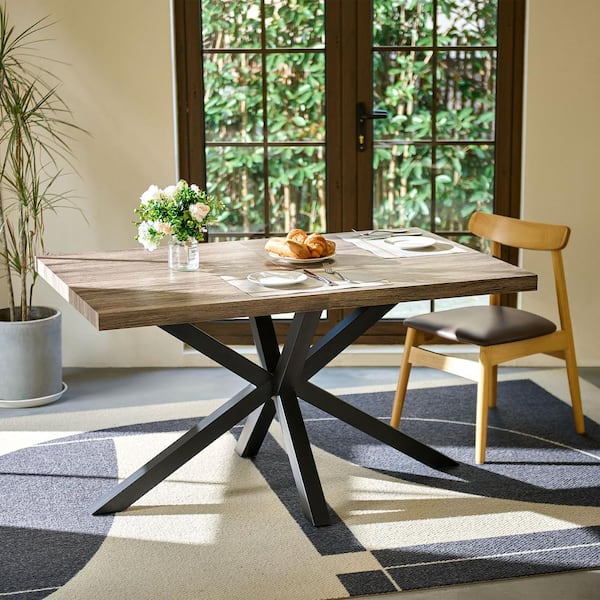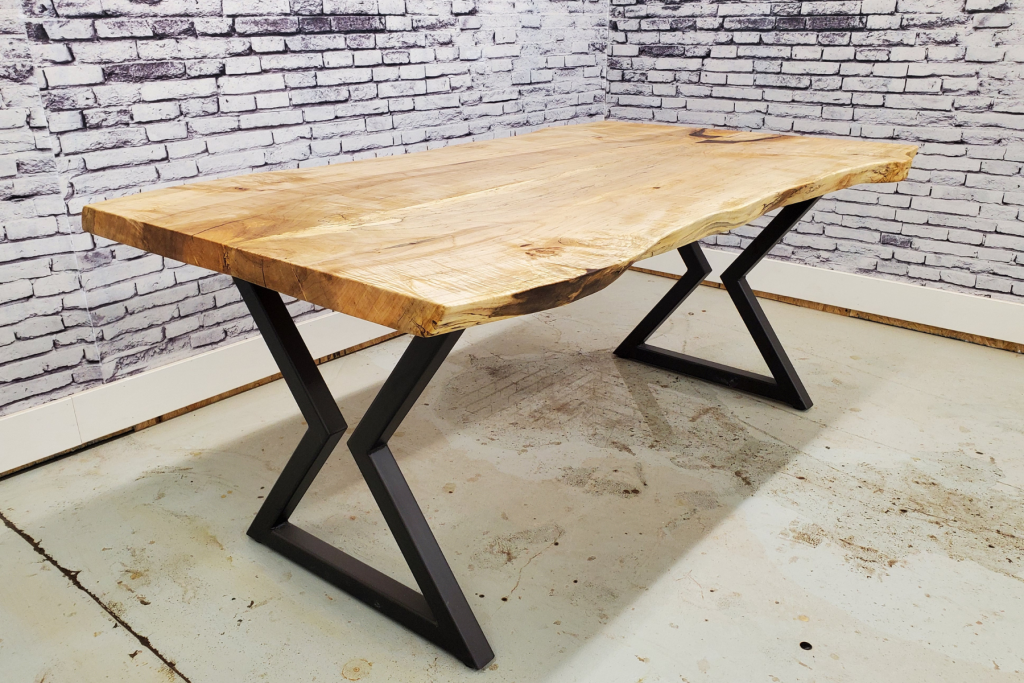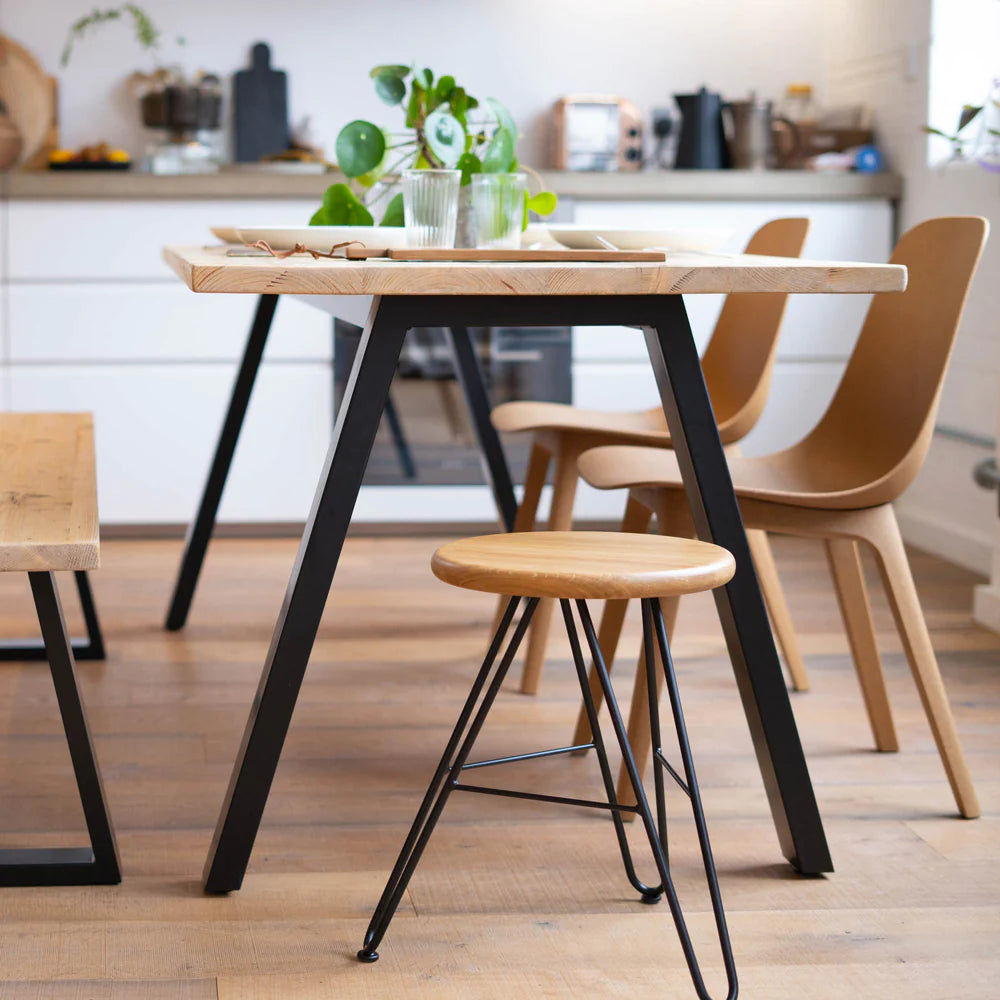Exploring the Various Sorts Of Dining Table Legs Wood for Your Eating Area
The option of eating table legs wood can exceptionally affect both the practical and visual qualities of your dining space. Solid wood choices, such as oak and walnut, give a classic look with unequaled sturdiness, while crafted timber choices supply cutting-edge designs that resemble the richness of all-natural grains. In addition, the growing pattern of redeemed wood introduces a sustainable aspect that charms to environmentally aware customers. As we explore these numerous choices, it ends up being necessary to take into consideration not only the aesthetic appeal but likewise the sensible effects of each product option. What variables should assist your choice?
Solid Timber Options

Furthermore, strong wood is renowned for its strength and durability. Unlike engineered products, solid wood is much less susceptible to warping and damages gradually when effectively maintained. This makes it an ideal choice for families or those that frequently organize events. Each item of strong wood is unique, showcasing specific characteristics that include in the charm and character of the dining table.
Furthermore, solid wood can be finished in countless methods, ranging from natural oils to discolored coatings, permitting property owners to customize their furnishings to match their decor. In recap, choosing solid wood for eating table legs not just ensures structural stability yet additionally boosts the visual appeal of the eating location, making it a beneficial financial investment for any home.
Engineered Wood Alternatives

Plywood, constructed from several layers of timber veneer, is especially solid and secure, making it an exceptional selection for dining table legs. Its layered make-up enables it to stand up to adjustments in humidity and temperature much better than conventional solid wood. MDF, on the various other hand, provides a smooth surface for paint or veneering, allowing developers to attain a polished look while preserving structural honesty.
When picking crafted wood options, it is crucial to consider the intended usage and desired visual. These materials not just boost the functionality of dining spaces yet also enable for greater design versatility, guaranteeing that contemporary and standard designs can coexist sympathetically.
Reclaimed Timber Includes
Reclaimed timber uses a distinct mix of sustainability and character, making it a significantly preferred choice for dining table legs. Sourced from old barns, factories, and various other frameworks, recovered timber embodies a background that brand-new products just can not replicate. Each item carries Get More Info its very own story, marked by distinctive blemishes, knots, and differing grain patterns, which contribute to a table's unique aesthetic charm.
Along with its visual beauty, reclaimed timber is an eco pleasant alternative. By repurposing previously made use of materials, it reduces the demand for brand-new lumber, therefore helping to save woodlands and reduce waste. This lines up with an expanding customer preference for sustainable practices in furnishings.
Additionally, recovered timber is often extra durable than recently collected timber as a result of its age. The all-natural drying out procedure that recovered timber goes through lead to a denser and stronger product, making it much less vulnerable to bending and splitting. This boosts the longevity of dining tables, permitting them to withstand the roughness of everyday use.
Softwood vs. Hardwood
When choosing dining table legs, recognizing the distinctions in between softwood and wood is important for achieving both aesthetic and practical goals. They generally show an even more rustic appearance, making them appropriate for informal or country-style eating rooms.
On the other hand, woods, sourced from deciduous trees like oak, cherry, and maple, are renowned for their thickness, toughness, and sturdiness. The intricate grain patterns and rich tones of woods offer a advanced and timeless appeal, making them perfect for official dining settings. While hardwoods my sources tend to be much more pricey and heavier, their durability versus damage commonly warrants the investment.
Inevitably, the selection in between softwood and wood for dining table legs need to straighten with your style vision, usage requirements, and budget, guaranteeing that your eating space shows your individual style while remaining practical gradually.

Surfaces and Treatments
The aesthetic appeal and durability of table legs can be considerably boosted via numerous coatings and treatments. These processes not just protect the timber from damages yet likewise raise its look, permitting it to match diverse indoor styles.
One typical therapy is tarnishing, which penetrates the wood and boosts its natural grain while adding shade. Stains offer a rich, sophisticated look, enabling property owners to match their furnishings with existing decoration. Conversely, clear finishes such as polyurethane or varnish develop a protective layer without altering the wood's original tone, making certain resilience against deterioration.
Furthermore, all-natural oils, like tung or linseed oil, nourish the wood and use a refined shine, all while being green. These oils allow the surface to take a breath, avoiding wetness accumulation and possible warping.
For those seeking a rustic charm, weather-beaten or troubled coatings can be put on create an aged appearance, including character to the item. Inevitably, the selection of therapies and coatings depends on personal choice, wanted visual appeals, and the particular timber type, making it necessary to consider these elements when picking table legs for your area.
Conclusion
Finally, the selection of table leg materials substantially influences both the practical and aesthetic elements of a dining space. Strong woods, engineered alternatives, and recovered choices each deal distinct advantages, satisfying numerous choices and requirements. Comprehending the differences between hardwoods and softwoods, in addition to ideal finishes and treatments, enables notified decision-making. Eventually, the choice of wood kind need to line up with wanted style, resilience, and environmental factors to consider, improving the overall dining experience.
The option of eating table legs timber can greatly influence both the aesthetic and useful top qualities of your dining area a fantastic read - Dining Table Legs Wood. Solid wood options, such as oak and walnut, supply a classic look with unrivaled toughness, while crafted timber choices provide cutting-edge designs that imitate the splendor of natural grains. Strong timber offers a timeless top quality that can raise the overall design of a dining area. Each piece of solid wood is distinct, showcasing individual qualities that include to the appeal and character of the dining table
Furthermore, redeemed timber is typically a lot more sturdy than freshly collected wood due to its age.